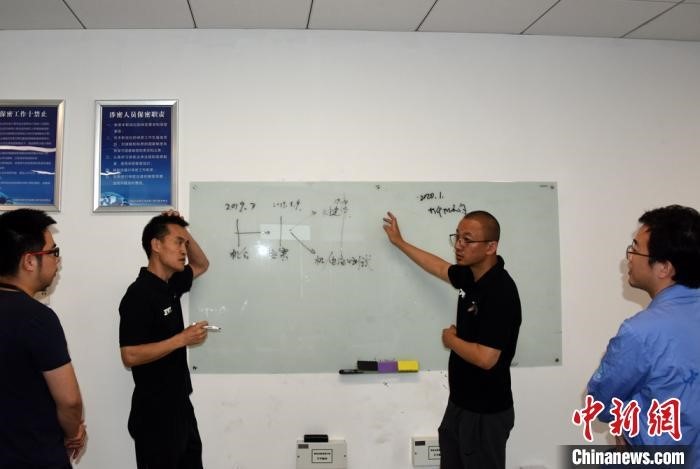Chinese scientists have been exploring space manufacturing using 3D printing to contribute to the construction and operation of China’s space station and deep space exploration.

Wang Gong (R2), head of the CAS Key Laboratory of Space Manufacturing Technology under the Technology and Engineering Center for Space Utilization of the Chinese Academy of Sciences, reviews the 3D printing experiment in the prototype of China's new-generation manned spacecraft with his colleagues in their office. (Photo: Sun Zifa)
The scientists had conducted the first in-orbit stereolithography (SLA) 3D printing experiment in the prototype of China’s new-generation manned spacecraft, launched in early May. This marks the first time scientists have managed to use metal-ceramic composite materials to print ceramics in space to a high level of accuracy.
The experiment was conducted by the CAS Key Laboratory of Space Manufacturing Technology under the Technology and Engineering Center for Space Utilization of the Chinese Academy of Sciences (CAS).
Wang Gong, head of the lab, and his colleagues had spent years preparing for this experiment. In 2015, they planned the first SLA 3D printing experiment in microgravity conditions. Wang and his team combined powder and resin to ensure that materials can be easily controlled in microgravity. They completed China’s first ceramic 3D printing experiment with a specially-designed SLA 3D printer on a parabolic plane in 2018.
This time, eight samples were printed through SLA 3D technology in the experimental spaceship. The in-orbit experiment showcased the space manufacturing team’s research achievements over the past few years, Wang said.
Wang said his team sees 3D printing in space as one of the methods of space manufacturing, and is also exploring other methods, adding that this success in SLA 3D printing marks a new beginning for his team.
He also revealed that his team would improve in-orbit 3D printing technology, provide in-orbit manufacturing services for the construction and operation of China’s space station, and contribute to China’s lunar and Mars exploration programs.
According to Wang, space manufacturing can be divided into three stages: manufacturing of small components, manufacturing and in-orbit assembly of large-scale space devices, and more comprehensive manufacturing activities in deep space such as the moon and Mars.
“We are still in the first stage and have a lot of work to do on this front,” he said, adding that the next generation may be able to build a factory in space.


